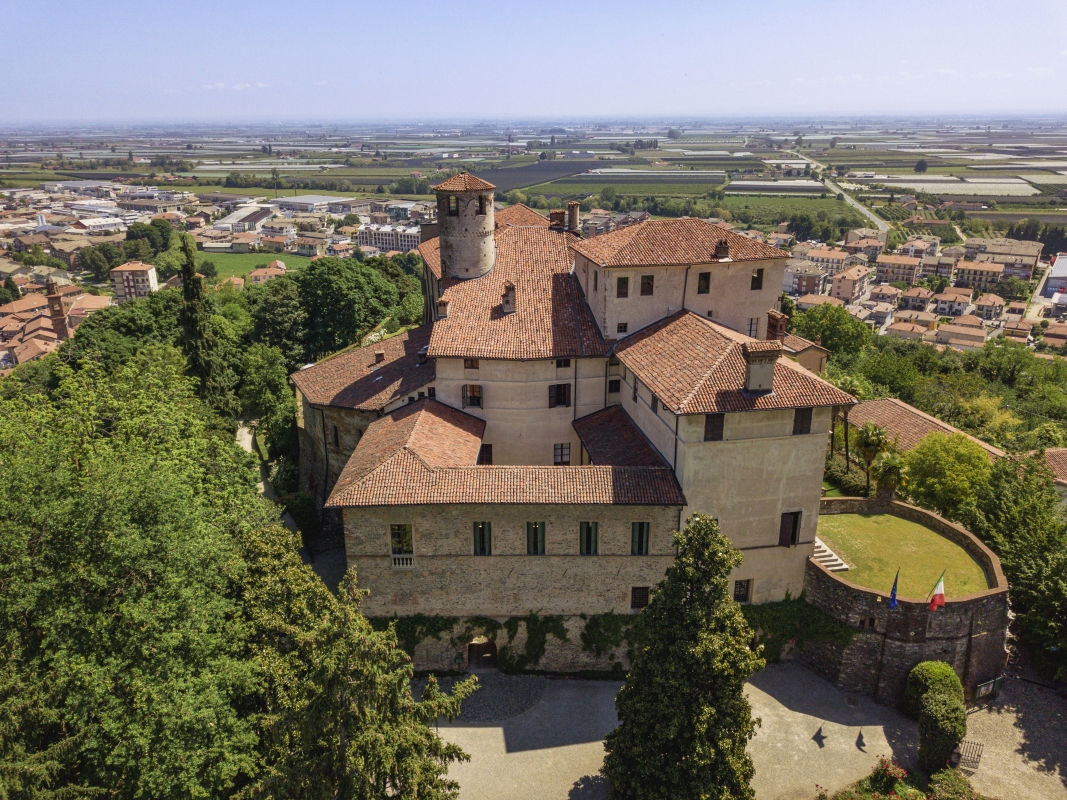Among the treasures hidden in every corner of Italy, the Castello della Manta stands out like a jewel set among the Piedmontese hills, in the province of Cuneo, about 40 km from Turin. This medieval fortress is one of the most important examples of late Gothic painting inspired by the themes of chivalric romances, an enchanting place that offers the opportunity to immerse yourself in history.
Its origins date back to the 13th century, when it was born as a military outpost, and its history traces the evolution of the region and the transformations of society over time.
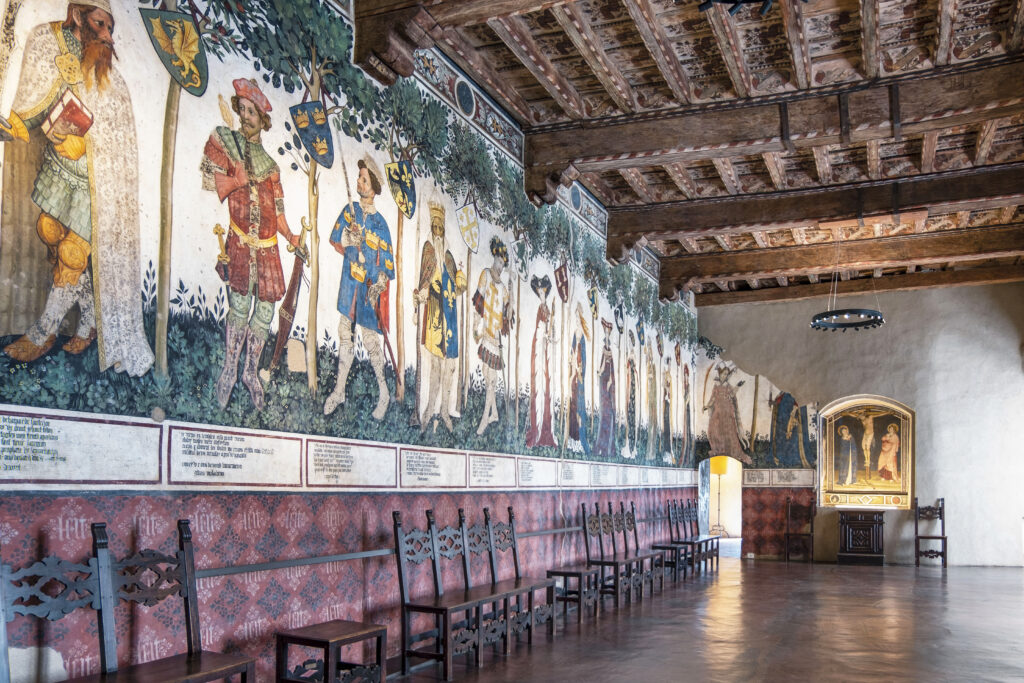
Against the magnificent backdrop of Monviso, Castello della Manta was initially built as a defensive fortress, undergoing numerous changes of ownership and architectural changes over time.
In the 15th century, when it became a noble residence belonging to the powerful Saluzzo family, it underwent an important transformation: the internal rooms were embellished with frescoes, some of which have survived intact to the present day, unique testimonies that allow us to take a look at life and on the chivalric culture of the time.
Its architecture, characterized by a set of styles ranging from Romanesque to Gothic, testifies to the long evolution of the castle over the centuries.
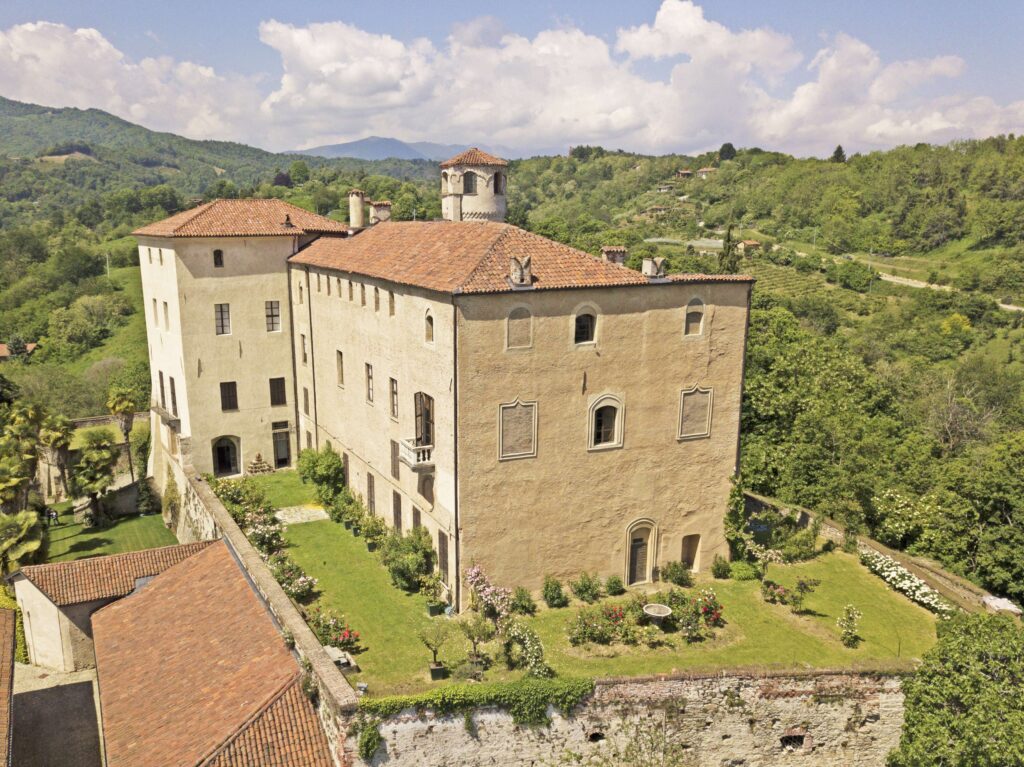
What to see at Castello della Manta
- The Throne Room and the Frescoes
This sumptuous room is characterized by a ceiling frescoed with scenes of medieval life and mythological references, with rich decorations and finely painted details. In addition to the Throne Room, the castle houses a series of well-preserved frescoes that narrate biblical stories, chivalric legends and historical moments.
- The Hall of Grotesques
It is characterized by a splendid ceiling decorated with mannerist paintings and stuccos, inspired by those of Raphael’s Logge in the Vatican.
- The Chapel
Located inside the Castle, it is a place of reflection and contemplation, with religious frescoes on the walls and a cozy atmosphere.
- The Rooms
The interior of the castle is richly decorated with period furniture and art objects. The different rooms tell the daily life of the medieval and Renaissance nobility, transporting us back in time.
- The Park and Gardens
The castle is surrounded by large green spaces and well-kept gardens, which offer panoramic views of the surrounding countryside.
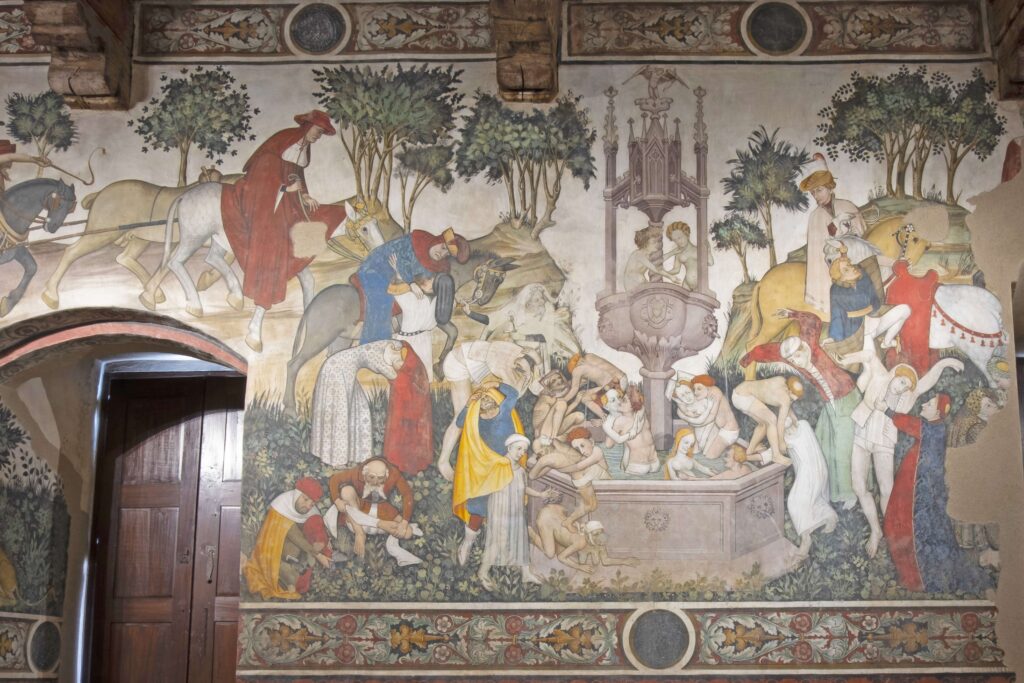
A visit to the Castello della Manta, a FAI asset, to which it was donated in 1985 by Elisabetta De Rege Provana, offers the opportunity to immerse yourself in history, walk through the same corridors walked by noble families centuries ago and admire the art that has withstood the test of time.
It is part of the “The Dukes of the Alps” project, a cultural itinerary that connects three emblematic places in the history of the House of Savoy: in addition to the Manta Castle, the Hautecombe Abbey and the Racconigi Castle.
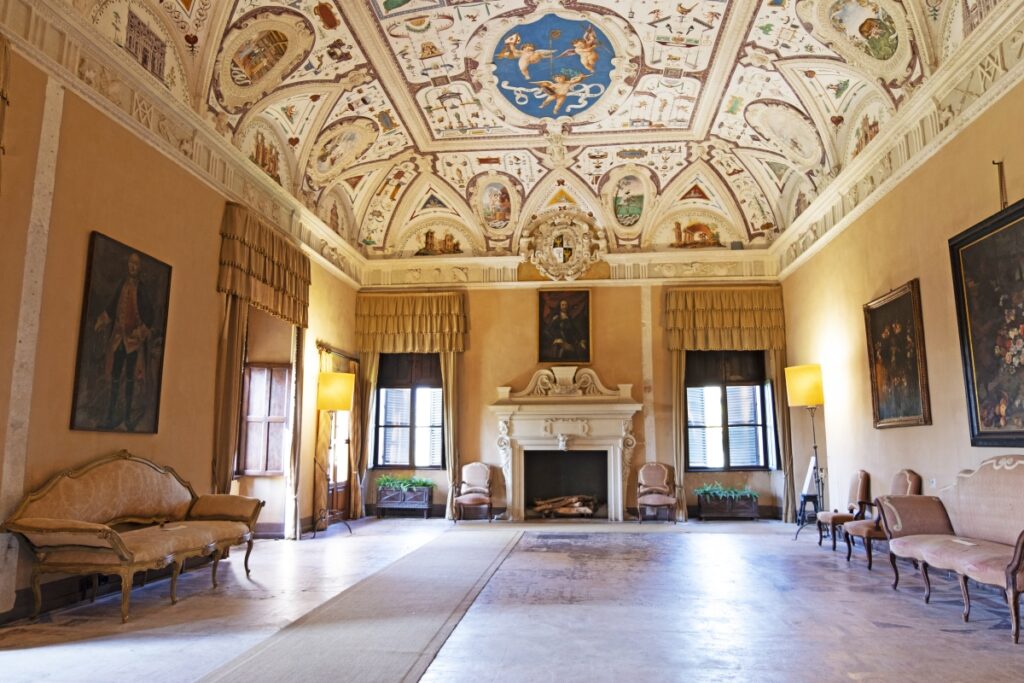
Photocredits: ENIT – Agenzia Nazionale del Turismo

